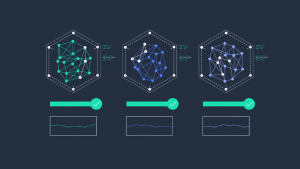How APIs know more about you than your BFF [infographic]
![]() Most of us spend hours in front of our computers or mobile devices. In fact, we spend so much time that sometimes we feel like the sites we visit, or the apps we use, know what we want even before we know. It’s quite amazing, but it can also be quite creepy too.
Most of us spend hours in front of our computers or mobile devices. In fact, we spend so much time that sometimes we feel like the sites we visit, or the apps we use, know what we want even before we know. It’s quite amazing, but it can also be quite creepy too.
You search for something online once, then you find your inbox bombarded with emails about the product you searched for, or you keep seeing ads popping up for that same product.
You can blame the application program interface, commonly known as the API, for this.
An API is a set of routines, protocols, and tools used by different applications or software to communicate with others in order to enhance the features and functionality of the said apps. APIs allow developers to build innovations on top of another company’s technology, like how your social media account can be used to log into gaming platforms.
APIs make our lives easier, but they can also be a cause for concern especially when you realize just how much companies are learning from you through your online activities.
In the infographic “The APIs That Secretly Rule Your Life” created by WhoIsHostingThis.com, it illustrates just how easy it is for companies to identify and profile a person based on their online activities, and make money from you by using that data.
Social media monitoring firms such as Trendrr, Trackur, and Sentiment Metrics use sophisticated algorithms to collect and analyze data people leave behind when they use the Internet. These firms can identify the age range, political leaning, a person’s household income range, what’s in their Amazon wishlist, gender and age of their children, or even build intimate databases based on voter registration files, shopping history, social media activities, and real estate records. These firms then sell this data to advertisers who use it to target you directly.
But it’s not all bad. Some companies are using APIs to deliver better, more personalized services. An example is Twilio, which allows developers to easily add SMS, voice and VoIP to their application, making it possible for a taxi service to tell its clients what time the cab will be arriving. ThisWeKnow.org uses Data.gov’s API to present users with data such as a city’s population, homeowners vs. renters, number of factories in the city, cancer statistics and more.
APIs fuel the mobile industry as virtually all apps that do something useful need to pass data back and forth between servers.
The most popular API is that of Google Maps, and that’s not entirely surprising as majority of apps these days want to track the location of their users. Location tracking is done for different reasons, including targeted ads, identifying where the majority of users are from, or determining what features to add or remove based on the demographic.
In 2005, there were only 105 APIs, but by 2012, that number reached 8,000, and according to White House Innovation Fellow Kin Lane, it will be the default for companies by 2015. The Top 5 categories of the last 1,000 APIs created are Enterprise, Financial, Science, Payment, and Messaging.
Find out more about APIs and how they play a huge role in our lives in the infographic below:
A message from John Furrier, co-founder of SiliconANGLE:
Your vote of support is important to us and it helps us keep the content FREE.
One click below supports our mission to provide free, deep, and relevant content.
Join our community on YouTube
Join the community that includes more than 15,000 #CubeAlumni experts, including Amazon.com CEO Andy Jassy, Dell Technologies founder and CEO Michael Dell, Intel CEO Pat Gelsinger, and many more luminaries and experts.
THANK YOU













